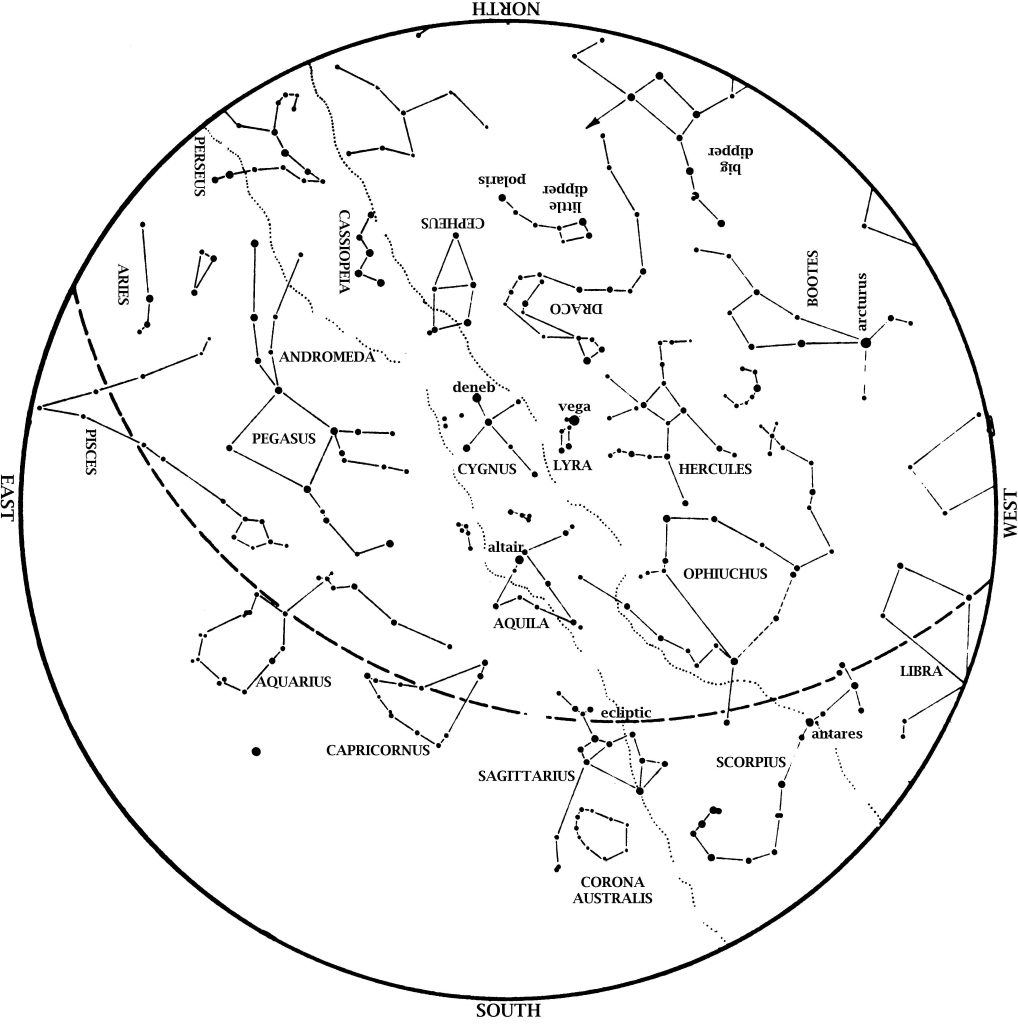Star Map September 2016
Venus is a little higher in the evening sky this month. Look low in the west in evening twilight.
Mars and Saturn are now in the southwest at dusk.
Mars continues to fade each night as Earth leaves it farther and farther behind. Also, it moves faster than Saturn against the background stars, so you can watch Mars pull away from Saturn this month.
Jupiter is behind the Sun and out of sight this month. Conjunction (Jupiter directly behind the Sun) is on September 26.
The Big Dipper is to the left of the North Star, with its handle pointing up. From that handle, you can ‘arc to Arcturus’ in the west at dusk.
Antares, brightest star of Scorpius, the Scorpion, is in the southwest, with the ‘teapot’ of Sagittarius to its left. Saturn is right above Antares. The Summer Triangle is almost overhead. The stars of summer are here. Meanwhile, the Great Square of Pegasus is high in the east at dusk, and is fully risen by month’s end. Autumn is here.
Moon Phases in September 2016:
New  Sept. 1, 4:03 am; Sept. 30, 7:11pm
Sept. 1, 4:03 am; Sept. 30, 7:11pm
September 9, 6:49 am
September 16, 2:05 pm
September 23, 4:56 am
The New Moon of September 1 blocks the Sun, causing an eclipse. However, the Moon is too far away at the time to block the Sun completely, resulting in an annular rather than total eclipse. Further, the whole event happens at night for us and is visible only in Africa.
At 9:21 a.m. CDT on Thursday, September 22, the Sun is directly overhead as seen from the equator. This marks the Autumnal Equinox, the ‘official’ start of fall. On this date, everyone on earth has the same amount of daylight and night. After this date, night becomes longer than day for us in the northern hemisphere. Below the equator, day now becomes longer than night, and spring begins.
This makes September one of the best months to observe an interesting effect. You may have noticed that the spot where the Sun sets on the horizon varies day to day. This variation is greatest, however, near the equinoxes in March and September. Therefore, if you watch the Sun set each evening you can this month, the change will be quite noticeable.
Come see us Saturday nights at the George Observatory! On most clear Saturday nights at the George Observatory, you can hear me do live star tours on the observation deck with a green laser pointer.
This star map shows the Houston sky at 10 pm CDT on September 1, 9 pm CDT on September 15, and 8 pm CDT on September 30. To use the map, put the direction you are facing at the bottom.
The Summer Triangle is overhead. This consists of the brightest stars in Cygnus, Lyra, and Aquila. Scorpius, the Scorpion, is in the southwest, with the ‘teapot’ of Sagittarius to his left. From the Big Dipper’s handle, ‘arc to Arcturus’ in the west. The Great Square of Pegasus is high in the east at dusk, heralding the coming autumn.
You can learn more about the stars over Texas by visiting the Burke Baker Planetarium, here at HMNS.










